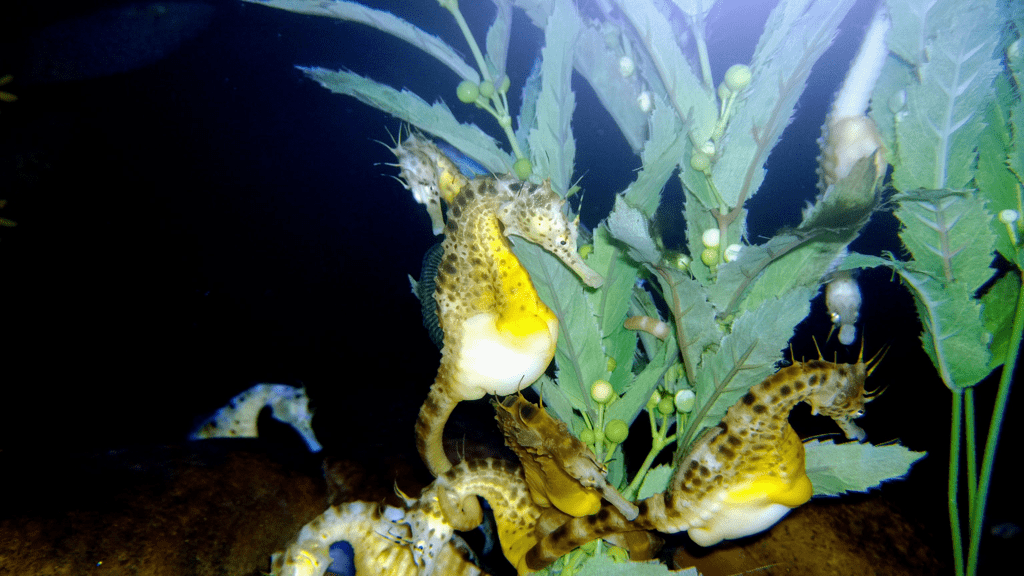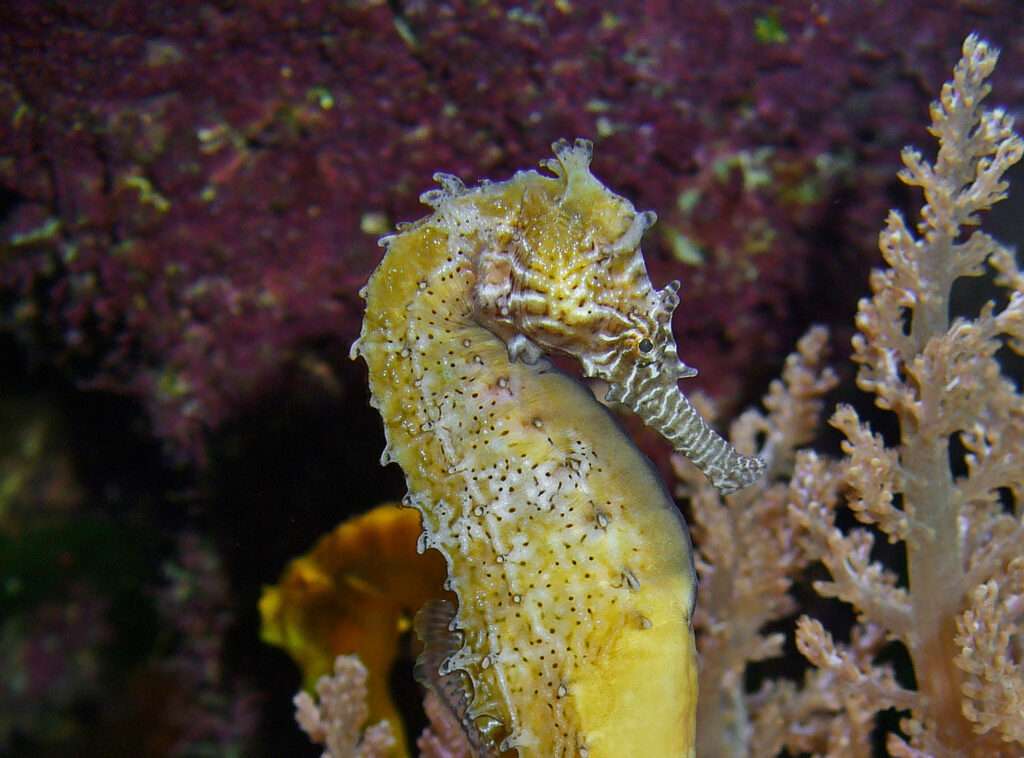
With a maximum size of 35 cm (14 in), the big-bellied seahorse, scientifically known as the pot-bellied seahorse, is one of the largest seahorse species in the world and the largest in Australia. Because of its name, the pot-bellied seahorse has a large, bloated stomach. This type of seahorse comes in a variety of hues, including brown, grey, yellow, orange, white, and mottled with dark patches on its head and trunk. They have prehensile tails, eyes that can move independently of one another, and forward-tilted, long-snouted heads. The appearance of men and women varies. A clean, smooth pouch-like region can be seen at the base of the stomach in males, who also have a longer tail and a shorter snout. The abdomen is more pointed in females. It is the guys who mature and get pregnant, not the females. Males grow a pouch on their stomachs called the “brood pouch” as they get older.
The female deposits her eggs by inserting her ovipositor—the reproductive organ—into the male’s pouch. The male subsequently fertilizes the eggs. The male seahorse gives birth to newborn seahorses that resemble adults after about 30 days. The newborns are completely independent and should care for themselves after birth. In the southwest Pacific, near Australia and New Zealand, pot-bellied seahorses have been found to live in ports and protected coastal bays. They are found in deeper water near sponges, together with seagrass and algae.
Habitat
In shallow water, this seahorse is found among seagrass, algae, and stony reefs. In deeper waters, it is found linked to colonial hydroids and sponges. They can exist in estuaries and connect to jetty piles and other man-made structures. They typically live in seas that are less than 50 m (160 ft) deep, but have been found as deep as 104 m. (340 ft). Pelagic or associated with floating seaweed, juveniles.

Traits
The big-bellied seahorse has a long-snouted, forward-tilted head, a pot stomach that is distended but not bulky, and a long, coiling tail. When not swimming, it coils its prehensile tail around any suitable growth, like as seaweed, in preparation for planktonic creatures to float by to be sucked up by the sucker placed on the tip of the snout like a vacuum cleaner. It swims vertically while using its dorsal fin. This seahorse is a voracious eater that enjoys eating small seaweed-dwelling organisms like copepods and amphipods as well as crustaceans like shrimp.
They don’t chew, which because of their short intestines allows them to eat excessive amounts. They can see prey and food more easily because each eye moves independently. It’s easy to tell males from females: The base of the male’s stomach, where the abdomen meets the front facet of the tail, is a clear, smooth, pouch-like area. Even males have a fin there, but it’s much less noticeable. The female has an abdomen that is more pointed and has a very noticeable fin at the base of it.
A physical shape resembling a seahorse, with a large, spherical stomach. In comparison to men, women are frequently more slim. Males can be identified by their enormous brood pouch. Black, yellow, or tan are the color options. People could have dark markings on their bodies. The largest species of seahorse can be found in the waters off Southeast Australia, with an average size of seven inches (18 cm).
Diet
They consume whole crustaceans like shrimp and amphipods by sucking them into their tube-like snouts.
Reproduction
Males, not females, are the ones who become pregnant. The brood pouch, which mature males produce on their bellies, is called this. The male fertilizes the eggs after the female has laid them by inserting her ovipositor (the reproductive organ) into the male’s pouch. The male gives birth to baby seahorses that resemble adults after about 30 days. The newborns are totally independent and let to fend for themselves after birth.
Table





